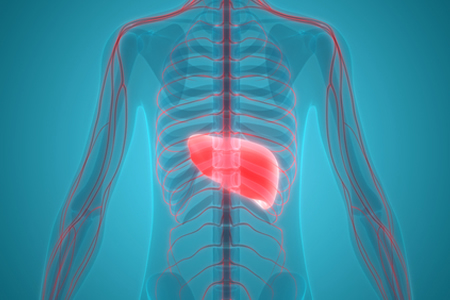A new study conducted by researchers at University of California, Los Angeles (UCLA) has revealed a mechanism that provides protection against the development of nonalcoholic fatty liver disease (NAFLD).
NAFLD is a term given to a range of conditions affecting the liver that result in the buildup of extra fat in individuals who do not drink alcohol or only consume small quantities of alcoholic drinks. There are no medications that can be taken to correct NAFLD, although the condition can be prevented from getting worse with lifestyle changes. If left unchecked, NAFLD can result in serious liver damage such as cirrhosis.
There is no single cause of NAFLD, but several risk factors have been identified such as diabetes, high blood pressure, high cholesterol, and being overweight. 80%-90% of obese adults have NAFLD, as do 90% of patients with hyperlipidemia, and 30%-50% of patients with diabetes.
The researchers determined that a chemical modification occurs in some RNA molecules that carry genetic instructions from DNA to cells that direct them to make proteins that could protect against NAFLD.
“Males and females exhibit striking differences in the prevalence of metabolic traits including hepatic steatosis, a key driver of cardiometabolic morbidity and mortality,” explained the researchers. “RNA methylation is a widespread regulatory mechanism of transcript turnover. Here, we show that presence of the RNA modification N6-methyladenosine (m6A) triages lipogenic transcripts for degradation and guards against hepatic triglyceride accumulation.”
The researchers showed that m6A is required for precise control of lipogenic enzyme activity, which “provide insights into the molecular basis for the existence of sex-specific differences in hepatic lipid traits.”
The researchers explained that their mouse study showed this protective checkpoint stalls under lipid-rich conditions in male but not female mice. They suggested RNA methylation could occur at a different rate in females, which would explain why females tend to have higher fat content in the liver. Without the m6A modification, differences in liver fat content were reduced significantly between the sexes.
The researchers also demonstrated that gene therapy can be used to enhance or add modifications to key RNAs, which could slow down or reduce the severity of liver disease. The findings could lead to the development of new therapies that enhance chemical modifications to protect against NAFLD.
You can read more about the study in the paper – Transcriptional regulation of N6-methyladenosine orchestrates sex-dimorphic metabolic traits – which was recently published in Nature Metabolism. DOI: 10.1038/s42255-021-00427-2
